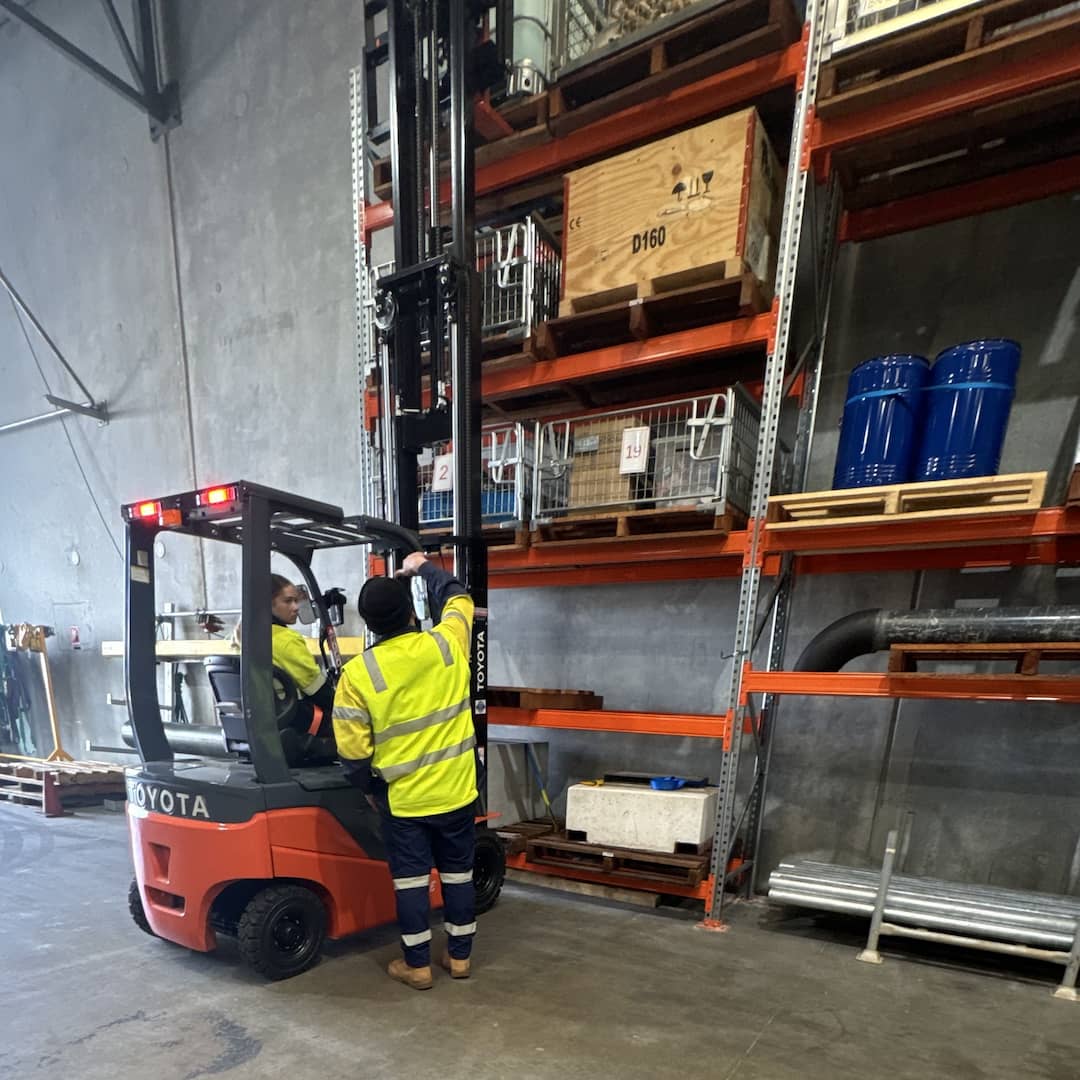

This course provides training for safely working at heights, focusing on risk assessments, proper use of fall protection systems, and ensuring compliance with safety regulations. It is designed for high-risk workplace environments.

This course covers gas testing of atmospheres in hazardous, unpredictable environments, such as confined spaces or hot work areas. It involves interpreting readings and taking appropriate actions, ensuring safety during work activities.

This course covers the correct use of fire extinguishers, fire hose reels, and fire blankets for first attack firefighting, focusing on safety and emergency response in routine tasks.

This course equips participants with the skills to safely operate a forklift truck in compliance with all relevant legislative requirements, emphasizing efficient planning, preparation, and execution of tasks, including proper packing-up procedures.

This course covers the skills required to plan, prepare, and safely operate a boom lift, including proper procedures for packing up.

This course covers slinging techniques, the selection and inspection of lifting gear, and/or the directing of the crane operator in the movement of the load using various communication methods, including hand signals, whistles, radios, and effective teamwork coordination practices.

This course covers the operation of non-slewing mobile cranes, including planning, operation, road driving, and packing up to ensure safe crane use and proper maintenance procedures.

This course covers the operation of non-slewing mobile cranes (up to 20 tonnes), including planning, operation, road driving, safety procedures, and packing up to ensure safe crane use.

This course covers the operation of non-slewing mobile cranes (up to 60 tonnes), including planning, operation, road driving, safety procedures, and packing up to ensure safe crane use.

This course covers the skills to be able to plan the work, select and inspect equipment, set up the task, erect structures and plant, and safely dismantle structures and plant.

This unit covers the rigging of cranes, rigging of conveyors, rigging of dredges and excavators, rigging associated with tilt slabs, demolition work, and dual lifts for licensing purposes.

This unit covers the use of mechanical load-shifting equipment to move, place, or secure loads. Additionally, it includes the rigging of gin poles, flying foxes, guyed structures, and suspended scaffolds.

This unit covers the skills required to plan work, conduct routine checks, inspect controls and operations, perform hoist operations, and shut down and secure the hoist.

This course covers knowledge required prior to entering tilt-up workplaces. It covers the design, manufacture, transport, erection, structural assessment, and sign-off stages of tilt panels.

This course covers both scissor and boom lift operation (under 11m), use of EWPA logbook, safety protocols, emergency lowering, maintenance, pre-start checks and pre/post-operation checks.

This course covers scissor lift operation (at any height), use of EWPA logbook, safety protocols, emergency lowering, maintenance, pre-start checks and pre/post-operation checks.

Conducting machine pre-operational checks; operating the telescopic materials handler; attaching, securing, lifting, carrying and placing materials; selecting, removing and fitting attachments; relocating the telescopic materials handler;

It covers identifying and orally reporting common construction hazards, understanding basic risk control measures, and identifying procedures for responding to potential incidents and emergencies.

This unit describes the skills and knowledge required to join polyethylene (commonly referred to as PE) plastic pipelines using butt welding, both in the field and under factory conditions.

This unit covers the skills and knowledge required to operate and maintain breathing apparatus and equipment in an irrespirable atmosphere, as defined by the Australian Standard AS/NZS 1715:2009 Selection, use and maintenance of respiratory protective equipment.